How Embedded Engineers Quickly Create a High-Quality Year-End Report PPT
Using the free AI tool Kimi, you can quickly generate a high-quality year-end report PPT in one minute.
No prior knowledge is required; just follow me in 6 easy steps.
1. Open Kimi’s PPT Assistant
-
• Open Kimi’s website: https://kimi.moonshot.cn/
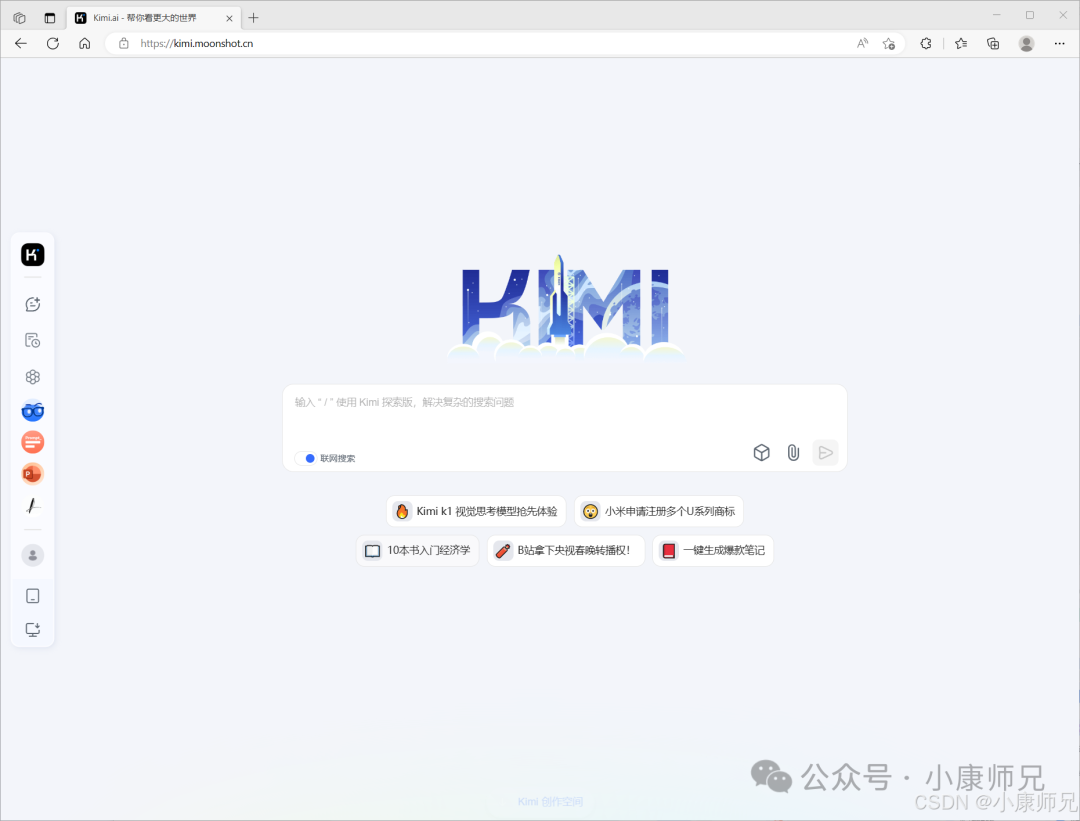
-
• In the left sidebar, find Kimi+, select PPT Assistant, and click to open.
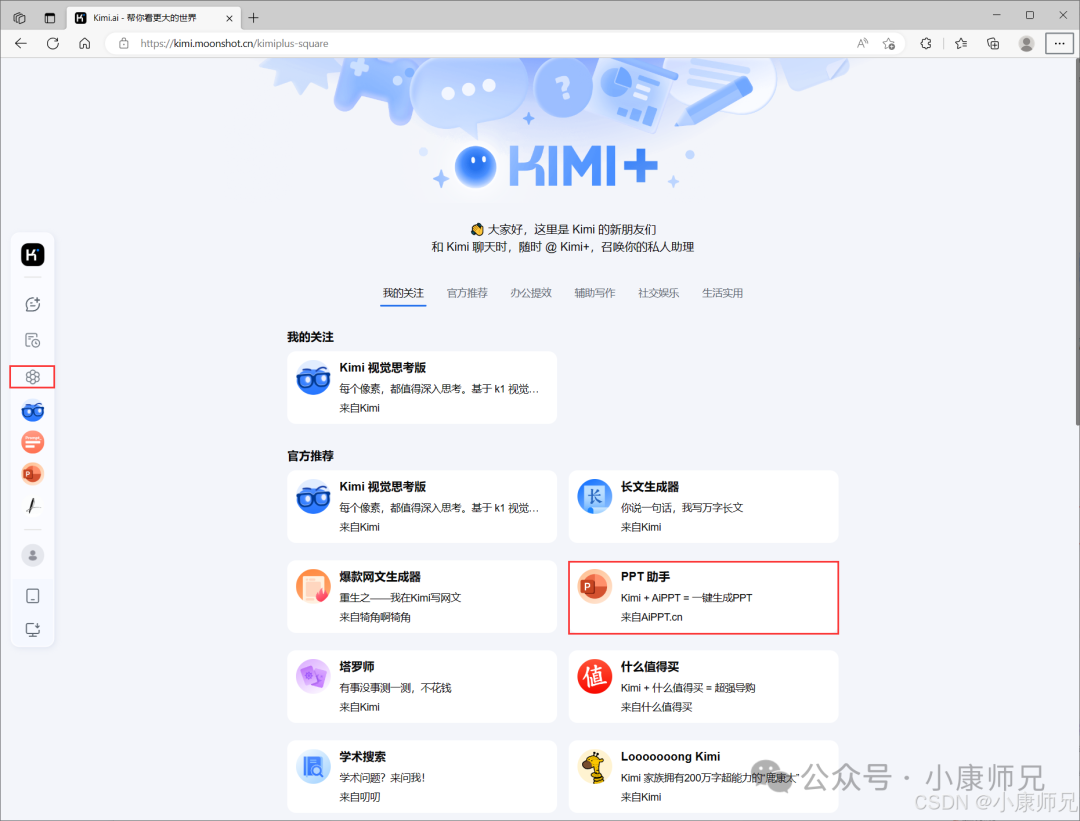
2. Input the PPT Outline or Content
-
• In the input box, enter the outline or content for the PPT you want to generate.
Help generate a year-end report PPT summarizing the work of an embedded engineer in 2024 and the plan for 2025.-
• Kimi will immediately provide a detailed year-end report plan.
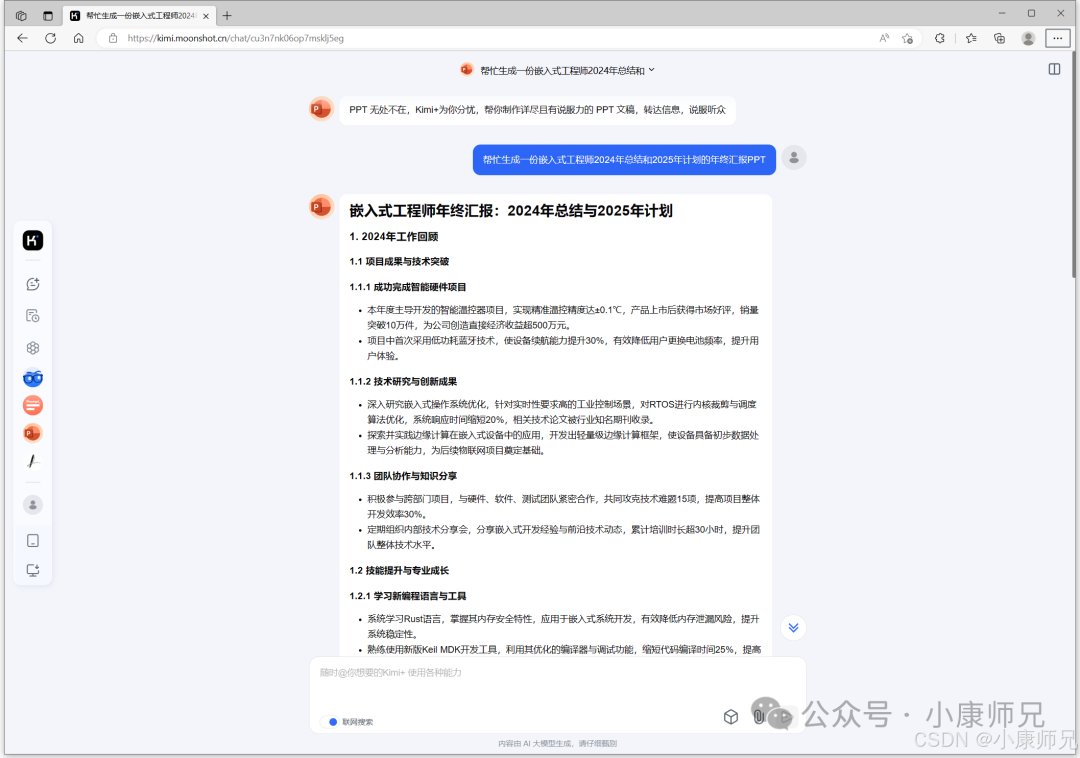
Embedded Engineer Year-End Report: Summary of 2024 and Plan for 2025
1. Review of Work in 2024
1.1 Project Achievements and Technical Breakthroughs
1.1.1 Successfully completed the smart hardware project
Led the development of the smart thermostat project this year, achieving a temperature control accuracy of ±0.1℃. After its launch, the product received positive market feedback, with sales exceeding 100,000 units, generating direct economic benefits of over 5 million yuan for the company.
This project first adopted low-power Bluetooth technology, improving the device's battery life by 30%, effectively reducing the frequency of battery replacements for users and enhancing user experience.
1.1.2 Research and Innovation Achievements
Conducted in-depth research on embedded operating system optimization, optimizing the RTOS kernel and scheduling algorithms for industrial control scenarios with high real-time requirements, shortening system response time by 20%. Related technical papers have been published in renowned industry journals.
Explored and practiced the application of edge computing in embedded devices, developing a lightweight edge computing framework that enables preliminary data processing and analysis capabilities, laying the foundation for subsequent IoT projects.
1.1.3 Team Collaboration and Knowledge Sharing
Actively participated in cross-department projects, closely collaborating with hardware, software, and testing teams to overcome 15 technical challenges, improving overall project development efficiency by 30%.
Regularly organized internal technical sharing sessions to share embedded development experiences and cutting-edge technology dynamics, accumulating over 30 hours of training and enhancing the overall technical level of the team.
1.2 Skill Improvement and Professional Growth
1.2.1 Learning New Programming Languages and Tools
Systematically learned the Rust language, mastering its memory safety features for embedded system development, effectively reducing memory leak risks and enhancing system stability.
Proficient in using the new version of Keil MDK development tools, utilizing its optimized compiler and debugging functions to reduce code compilation time by 25% and improve debugging efficiency by 40%.
1.2.2 Participating in Industry Training and Certification
Participated in advanced training courses for embedded system design, gaining in-depth knowledge of complex system architecture design methods, with the graduation project receiving excellent evaluations.
Passed the ARM Embedded Systems Engineer certification exam, further enhancing professional recognition and competitiveness in the industry.
1.2.3 Personal Honors and Awards
Received the "Annual Outstanding Technical Employee" title from the company, recognizing outstanding contributions in project development and technological innovation.
Won the "Best Innovation Award" in an industry technology competition for the design of an embedded intelligent security system, with a prize of 5000 yuan.
1.3 Challenges Faced and Solutions
1.3.1 Hardware Compatibility Issues
Faced compatibility challenges with different hardware interfaces and communication protocols in a multi-brand sensor integration project. Successfully achieved seamless integration of 10 types of sensors by writing a universal driver adaptation layer, ensuring timely project delivery.
Maintained close communication with hardware suppliers to optimize product interface designs, addressing compatibility issues from the source, reducing the occurrence rate of similar problems in subsequent projects by 80%.
1.3.2 Software Performance Bottlenecks
Encountered performance degradation issues in embedded software during high concurrency data processing. Analysis revealed unreasonable memory allocation and task scheduling. By adopting dynamic memory management algorithms and priority rearrangement strategies, software performance improved by 50%, meeting project performance indicators.
Based on performance optimization experience, summarized a set of embedded software performance tuning methodologies to provide reference for the team's subsequent projects.
1.3.3 Project Timeline Pressure
Faced urgent project delivery tasks, with tight original timelines. Through reasonable task decomposition and resource allocation, adopted an agile development model, working overtime to overcome difficulties, ultimately completing the project 3 days ahead of schedule, ensuring smooth business operations for the company.
Conducted a retrospective review of project management processes to optimize progress monitoring and risk warning mechanisms, enhancing the ability to respond to unexpected situations.
2. Work Plan for 2025
2.1 Technical R&D Directions
2.1.1 Explore the Application of Artificial Intelligence in Embedded Fields
Research lightweight machine learning algorithms, planning to apply them to intelligent security devices to achieve an image recognition accuracy of over 95%, providing technical support for product upgrades.
Develop an embedded AI development framework to lower the development threshold for the team on AI projects, expecting to support more than 3 projects within the year.
2.1.2 Deepen the Integration of Embedded IoT Technologies
Focus on the integration of 5G and embedded devices, conducting research on low-latency, high-reliability communication technologies, aiming to achieve communication latency between devices of less than 10ms, facilitating the implementation of industrial IoT projects.
Promote the transformation of embedded devices into edge intelligent nodes, completing edge computing function upgrades for at least 2 devices, enhancing the overall efficiency of IoT systems.
2.1.3 Pay Attention to Emerging Technology Trends
Track the impact of quantum computing on embedded encryption technologies, laying out related research in advance to ensure the company's products maintain a leading advantage in future information security fields.
Research the application of blockchain technology in data traceability and anti-tampering for embedded devices, exploring its feasibility in scenarios such as supply chain management.
2.2 Project Planning and Goals
2.2.1 Upgrade of Smart Home Control System
Undertake the smart home control system V2.0 project, introducing whole-house intelligent scene linkage functions to achieve seamless collaboration between devices, enhancing user experience, with an expected revenue growth of 30% for the project.
Optimize system architecture, reduce power consumption by 20%, extend device battery life, and enhance product market competitiveness, with plans to complete development and launch in the first half of the year.
2.2.2 Industrial Automation Embedded Solutions
Initiate the industrial automation intelligent detection device project, developing an embedded vision detection system targeting high-precision component inspection needs, achieving micron-level detection accuracy and increasing production efficiency by 50%.
Collaborate with leading industry enterprises to create customized embedded solutions, expanding the company's market share in the industrial automation sector, expecting to acquire more than 5 new clients.
2.2.3 New Product Research and Development
Invest resources for preliminary research on embedded smart wearable devices, exploring new functions such as health monitoring and sports data analysis, laying the groundwork for the company to expand into the consumer electronics field.
Establish a cross-departmental innovation team to incubate at least 2 innovative projects, stimulating team creativity and seeking new business growth points.
2.3 Team Building and Talent Development
2.3.1 Expand Team Size and Professional Fields
Based on project needs, plan to recruit 3 embedded hardware engineers and 2 embedded software engineers to supplement the team with fresh talent and optimize personnel structure.
Introduce talents with backgrounds in emerging technologies such as artificial intelligence and IoT to broaden the team's technical vision and promote cross-field technology integration.
2.3.2 Strengthen Internal Training and Knowledge Sharing
Develop an annual internal training plan covering various aspects such as new embedded technologies, project management, and team collaboration, with each person training for no less than 40 hours per year.
Establish a knowledge-sharing platform, encouraging team members to share technical insights and project experiences, selecting outstanding sharers each month to create a positive learning atmosphere.
2.3.3 Talent Cultivation and Development Path Planning
Create personalized growth plans for each new employee, assigning mentors for one-on-one guidance to help them quickly integrate into the team and master core skills.
Establish a technical promotion channel, clarifying evaluation standards and rights for each level of technical experts, incentivizing team members to continuously improve their technical levels, with the expectation of cultivating 2 senior embedded engineers within the year.3. Generate PPT
-
• At the end of the PPT plan, click the One-Click Generate PPT button.
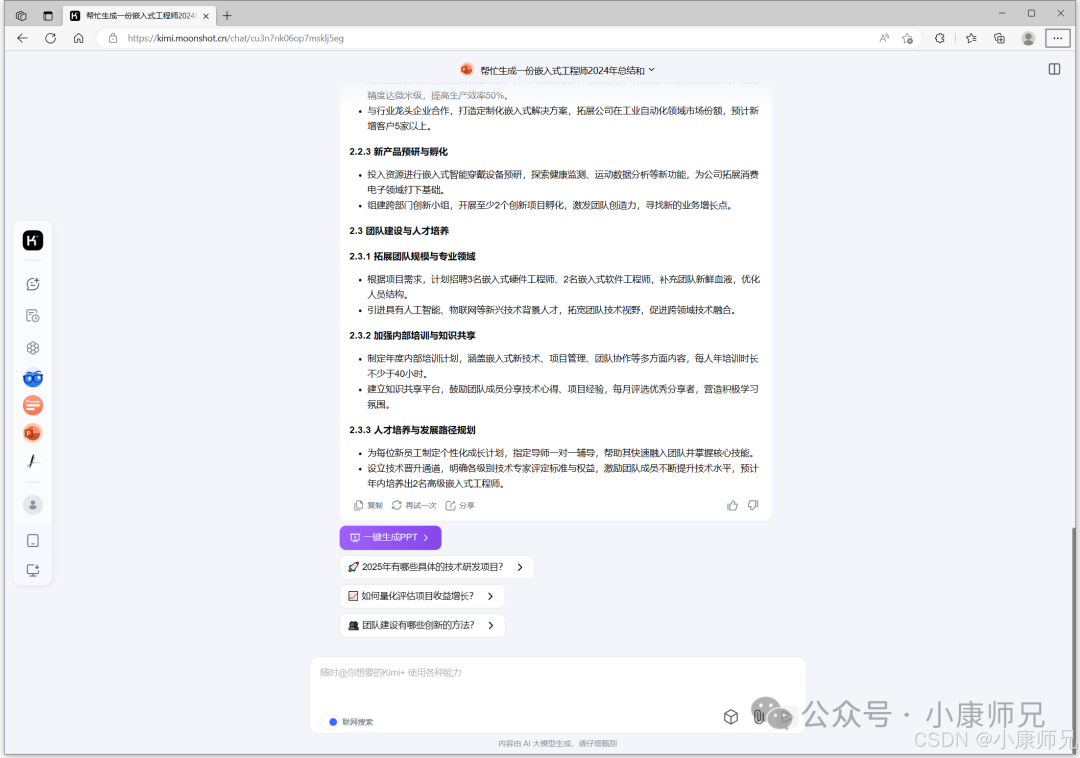
-
• Choose the template for the PPT, with different design styles, usage scenarios, and main colors available for selection. -
• Click the Generate PPT button in the upper left corner and wait for the PPT to be generated.
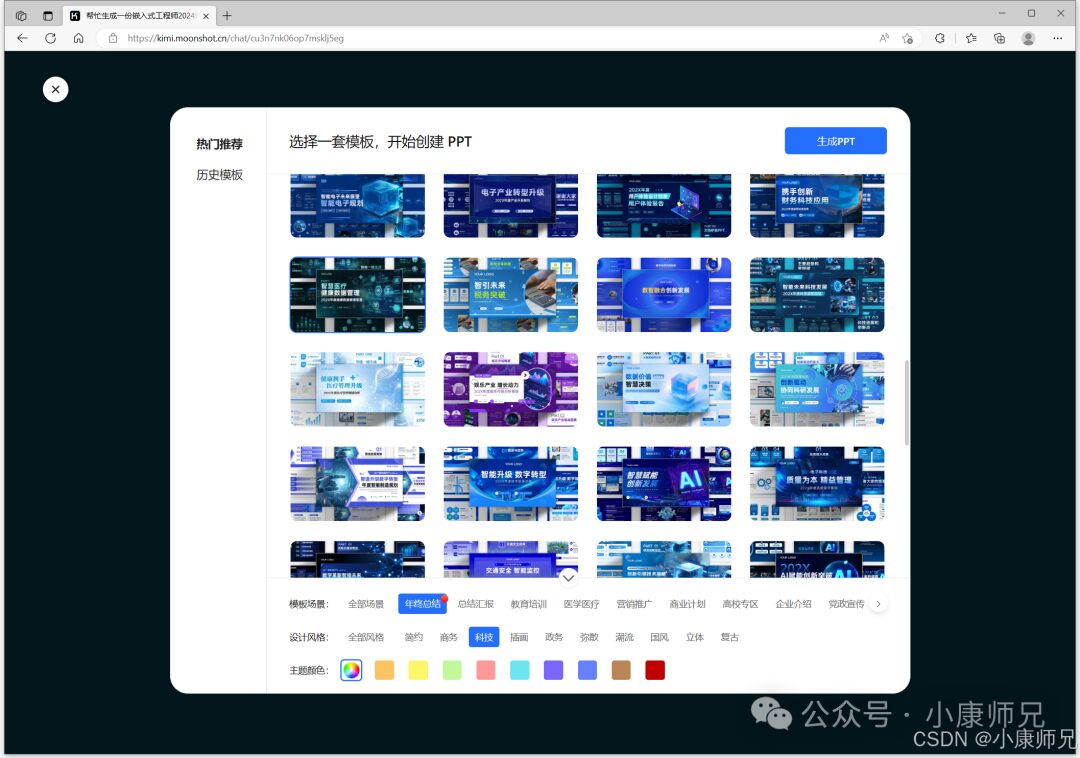
4. Online Edit PPT
-
• After the PPT is generated, click the Edit Now button.
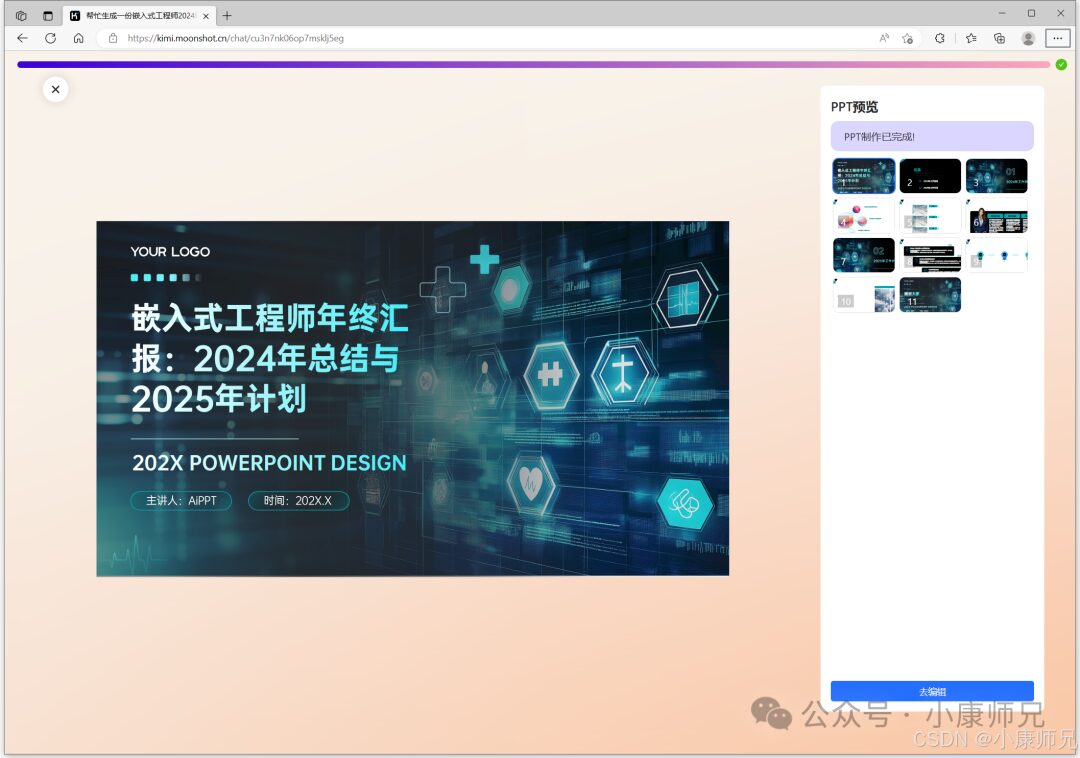
-
• You can switch between different PPT pages and edit the content, text, and images online.
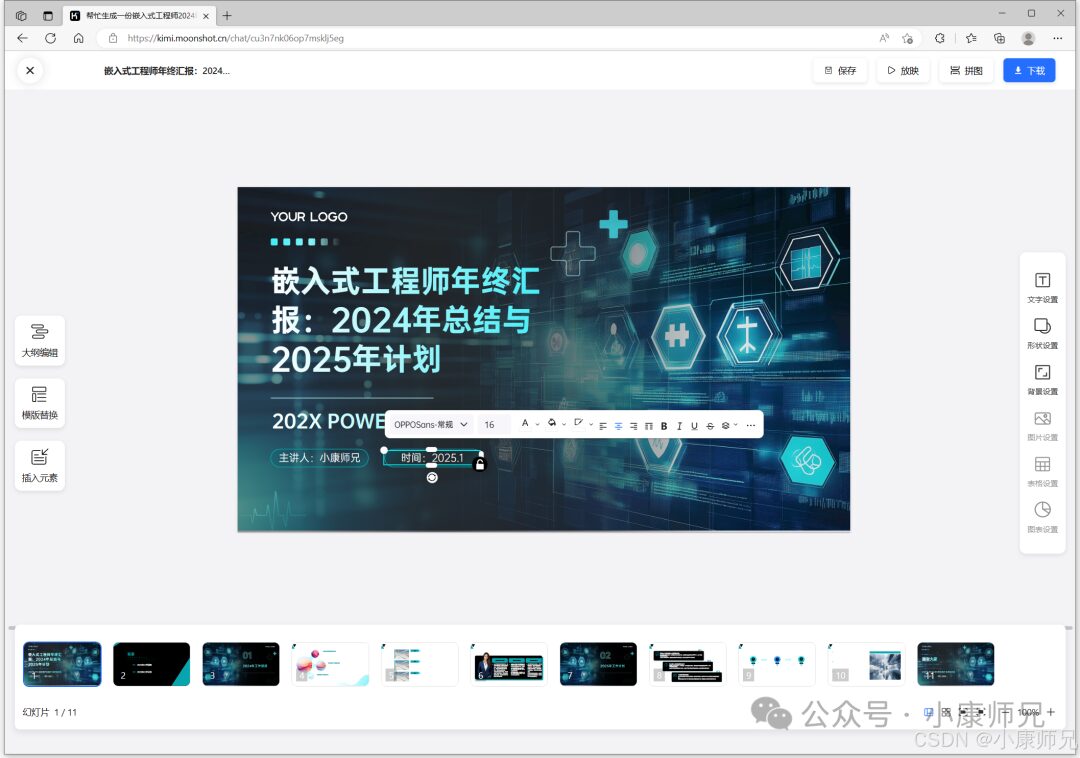
5. Download PPT
-
• After editing the PPT, click the download button in the upper right corner.
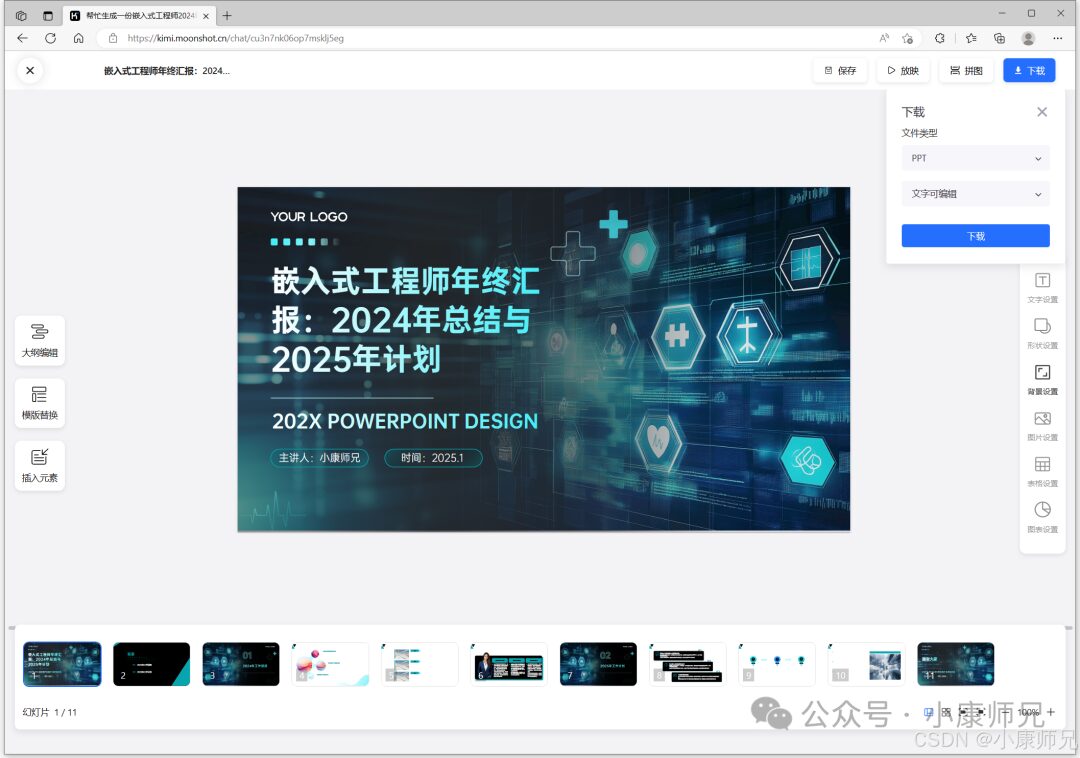
-
• You can download the PPT document to your local machine.
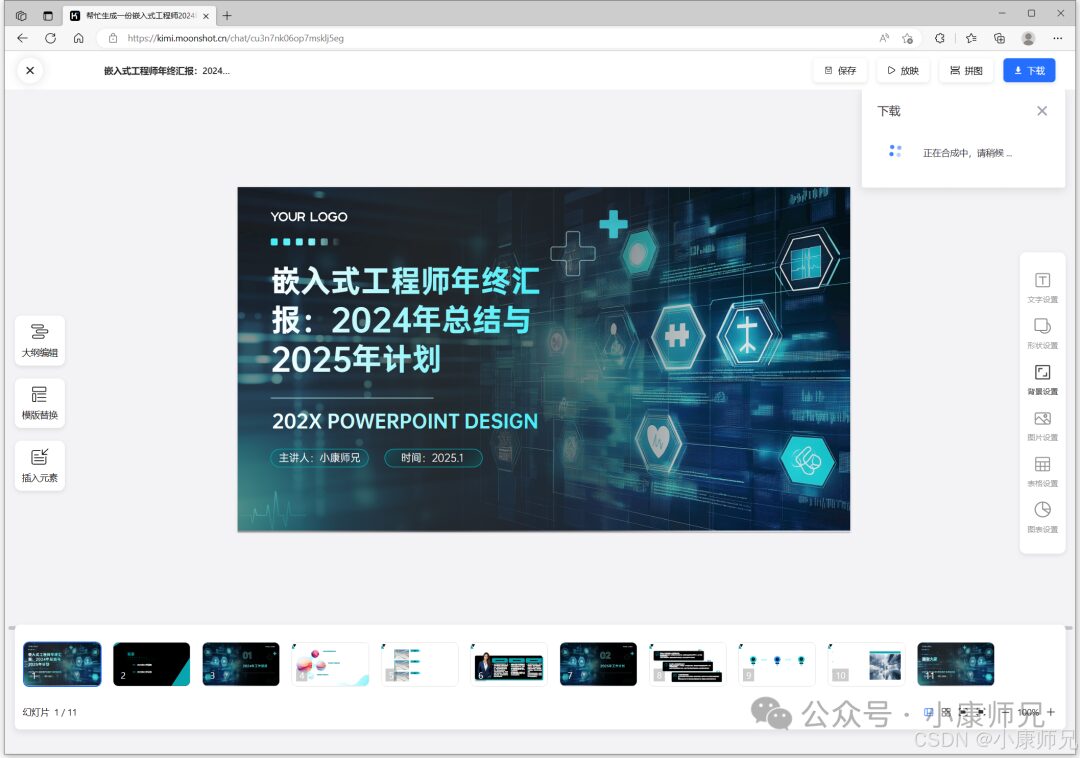
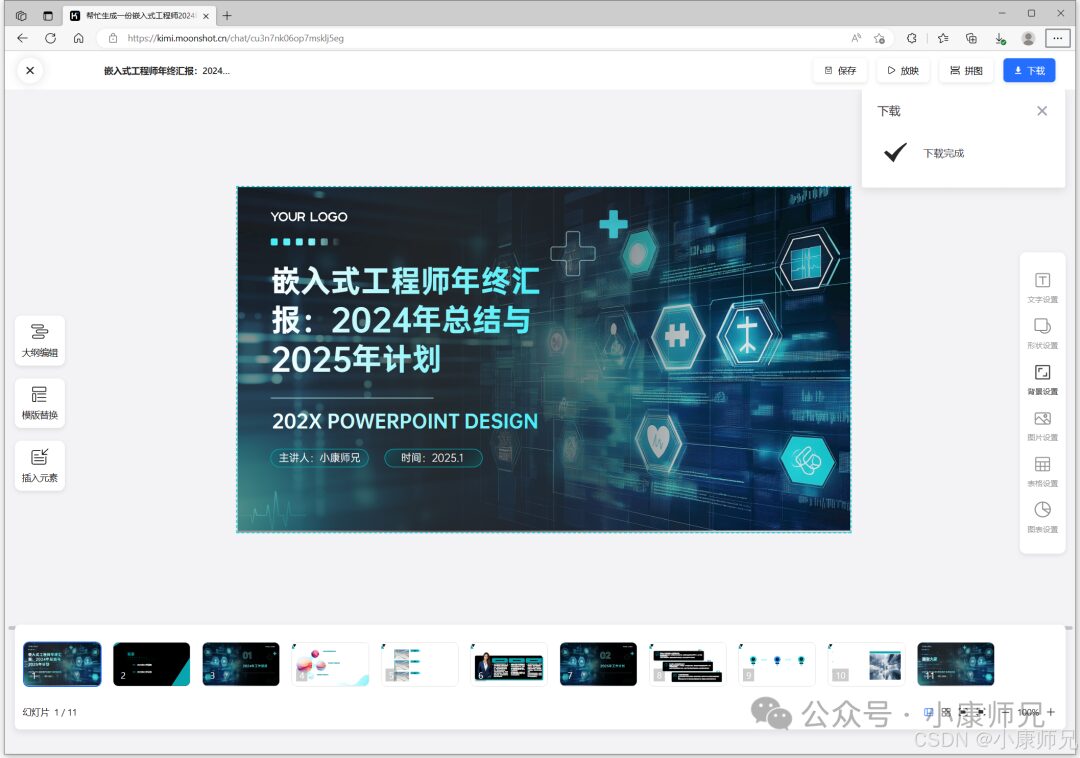
6. Edit PPT Locally
-
• Click the downloaded PPT file to enter the final step, local editing of the PPT.
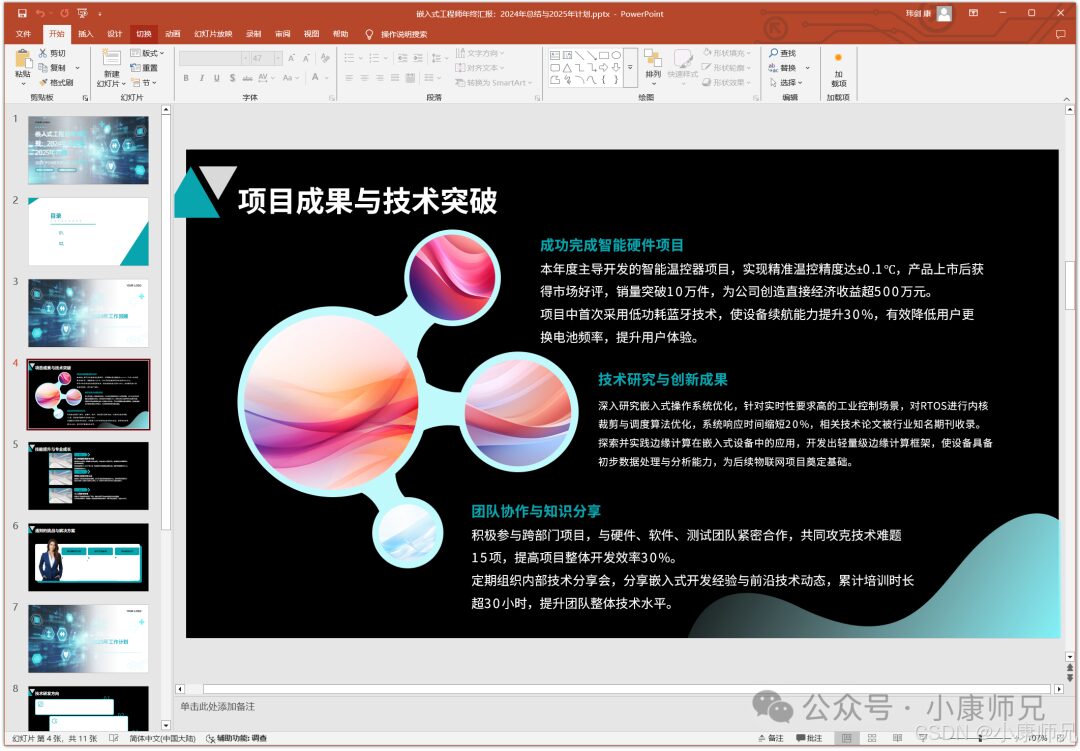

Hi! I am Xiao Kangshi.Brother.
Worked as a system engineer in a large company, a technical supervisor in a medium company, and now the technical director of a small company.
I have my own insights on IoT development, and in my spare time, I like to consolidate, organize, and share my technical knowledge.
Recommended Reading:
-
What is MCU? (Popular Science Comic)
-
Jumping from Huawei to Honor! The first Fellow to leave Huawei! The top technical expert
-
AI Upward, Economy Downward, Two Knives Cut Workers! New Changes at Fujian NetDragon! Turning NetDragon into a New AI Organization with AI Production Lines! The company will only keep those above P8
-
Annual Salary of Ten Million Temptation? Zhou Chang, head of Alibaba Tongyi Qianwen, jumps! ByteDance adds another general
-
My Experience with Software Qualification Examination: Preparing for a Month, Passing System Architect Designer in One Go!
Technical Column:
-
ESP32-C3 Beginner’s Guide – Introduction
-
TaiLing Micro 8258 Beginner’s Guide – Introduction
-
IoTDB Beginner’s Guide – Introduction